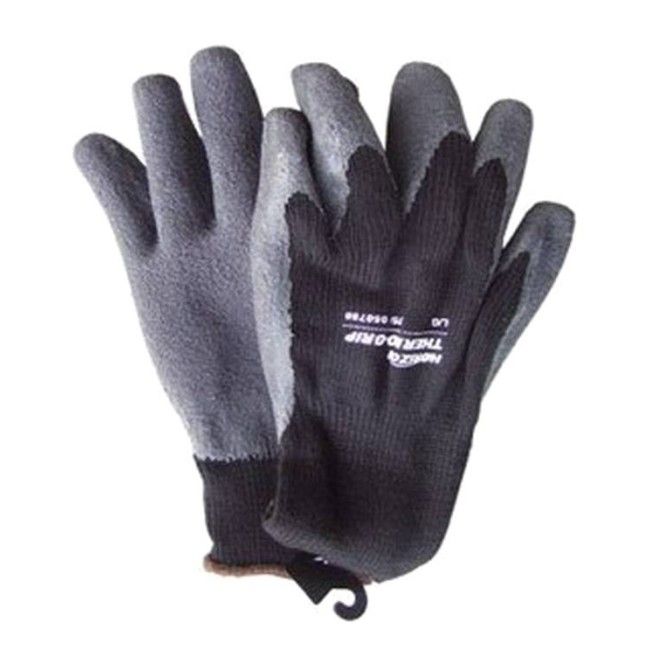




No returnable if used. For more information about our return policy, please refer to the Orders and Returns.
Horizon Thermo-Grip™ fleece lined polyester/acrylic knit gloves with wrinkle-grip latex coating on palms and fingers. Sold in pairs.
These gloves are available in sizes ranging from small (7) to extra-large (10). Please select the size needed in the field located above.
G750760 peculiarities:
This knit glove is comfortable and ergonomic while providing a dependable grip on wet or on dry surfaces. This glove is an excellent cost-efficient glove for general purposes. It moreover offers a comfortable thermal insulation at an affordable price.
Polyester properties:
This fabric offers a good abrasion as well as chemical resistance. Polyester may easily substitute wool, since it keeps us warm, but is lighter and dries more easily than wool besides being crease-resistant. Polyester is however a little coarser to the touch than most textiles; it also doesn’t resist heat and retains odours.
Acrylic properties:
Acrylic is a warm material often used for winter gear. This fabric substitutes quite well wool, since it is more cost-effective, dries easily and quickly and keeps us warm and dry. In turns, it is not as resistant as wool and tends to pill to create a raised effect.
Latex properties:
Natural rubber latex properties vary according to the additives dispersed slightly through the compounding. This fixed polymer structure delivers among other things its significant elasticity, its flexibility, its high tensile strength and its excellent barrier performance to viruses and blood borne pathogens. In comparison with its synthetic counterparts, latex offers a poor resistance to oil, fat and hydrocarbons, but resist well to some acids.
Use for:
This glove is recommended to workers involved in cold storage facilities, in the construction field, agriculture and utilities. It offers a good dexterity in cold and damp conditions such as in winter.
Do not use for:
Polyester is well known to have a low resistance to heat. Regarding the chemical resistance of latex, you should know that latex degrades quickly when in contact with most organic solvents and hydrocarbons. This glove cannot eliminate the risk of mechanical endangerment although it offers an average protection on this level. This glove is partially covered only, thus it not recommended immersing it completely since it won’t protect you.Natural rubber latex contains latex proteins, a known allergen. A simple contact with that protein can lead to a reaction or the development of a Type-I allergy, that is, a quick reaction sometime deadly. Symptoms may range from a simple skin irritation to a life-threatening anaphylactic reaction.
Maintenance and service life:
It is recommended to carry out a basic maintenance to extend the service life of your gloves. Simply wash them with cold water, that is, 85°F/30°C, and a mild detergent. You can then dry them at low temperature in a dryer. Never use bleach on this glove.
Data sheet
Specific References
You might also like